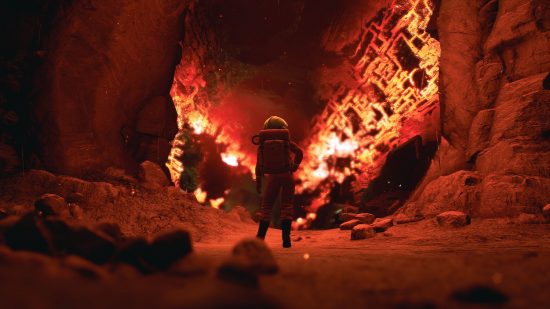Our Verdict
An intriguing story of exploring new frontiers and an easy gateway into retro sci-fi literature, The Invincible is a powerful, engrossing cosmic drama that's held back by a lack of variety and innovation, rough edges around its core mechanics, and a supporting cast that can't quite match the energy of its stars.
While it’s based on the old hard science fiction novel by Polish writer Stanisław Lem published in the 60s, Starward Industries’ The Invincible isn’t a direct videogame adaptation of his anthology. What it does is build upon that story, finally offering a visual representation of the writer’s work following a movie planned in the 60s that failed to materialize. If you’ve read the book, the story game is a great way to finally continue that experience. For most, however, it’s a powerful entryway into the complex worlds of a scribe you may very well know nothing about.
After waking up on a barren planet, it doesn’t take long for our hero Yasna to orientate herself to her new surroundings. Having mapped out the immediate area before she fell unconscious out in the open, it’s clear she’s been here before. What transpires isn’t just a stroll while her memories come back to her, however. She needs to find her crew, figure out why she’s on her lonesome, and get into philosophical spats with her fleet’s leader who’s still chilling in the atmosphere above.
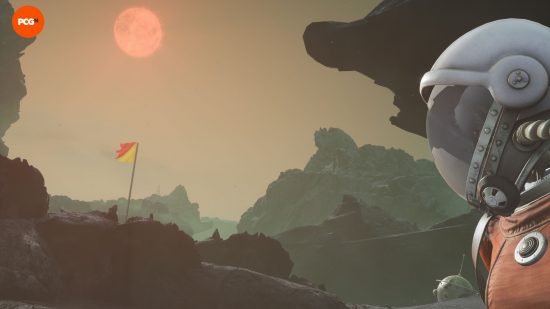
Set to a retro and classical-infused synth-wave score that’s as much Blade Runner as it is 2001: A Space Odyssey, it’s Brunon Lubas’ soundtrack that builds the gloomy ambience of this mystery thriller. Long before the story kicks up a gear, the soundscape sucks you in – the dirt on your visor a necessary filter for the barren planet’s oftentimes beautiful vistas and otherwise harrowing hollows, with the communication between you and your strict mission leader the only other thing there to break up the eerie silence of the desolate landscape.
You’re rarely alone on this trip. When you are, you feel it. Though the constant chatter might irk some, the performance between Yasna and her hard-to-trust and strict Astrogator (not a reptile) is, frankly, phenomenal, and another major part of what makes the space stroll so easy to fall into.
What makes the journey harder to undertake is the troublesome interaction mechanics and, to a potentially greater degree, the buggy checkpoint and save system. In a slightly disappointing turn, there’s rarely much need to do anything more than click on an object to fully interact with it. The environments are utterly gorgeous and a delight to stop, observe, and take photos in, but navigating them correctly can be a struggle.
You’ll occasionally use the movement inputs to turn a key or dial, but little more than that. No rotating your mouse to unscrew a plate away from a machine, or any real puzzles to ponder. Everything’s safe and straightforward. While it works just fine the vast majority of the time, there were numerous moments where I was left wandering. Not because I didn’t know where to go, but because the interaction icon’s refusal to appear meant that the suspected road ahead just wasn’t accessible.
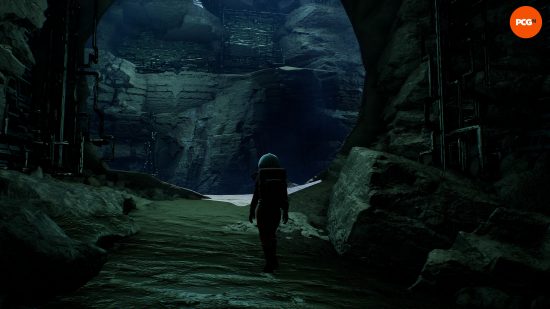
In most cases, walking away and coming back to try again worked. In others, I had to reload the checkpoint – which can set you back quite far. In the most annoying case, it was a not-so-steep hill causing the problem. The kind you could visibly just walk up, with an objective marker taunting me at the very top. It’s where I needed to go, but the restrictive and loose laws of traversal I was bound to just weren’t having it.
I thought that maybe I was meant to find another route, perhaps driving a rover miles down a winding road to find a route up onto the ledge. In reality, a checkpoint reload and some annoying tiptoeing around a rock on the far left of the slope was the answer. This time, the small interaction marker appeared and I was able to climb the corner of a wide slope that really would have been easier to simply walk up.
Similar things happened throughout. They weren’t disheartening enough to force me out of the game, but the risk would have been exponentially higher had it not been a work commitment. Thankfully, I had a genuine desire to see the journey through. To see what was around the proverbial corner. When not held back by its own faltering mechanics, the narrative pacing of The Invincible is impeccable. One discovery is never enough, and it ups the ante with each reveal. If you’ve read the original novel, it’s bound to be a treat, and as someone who hasn’t, I can say without spoilers that the narrative certainly drew me in.
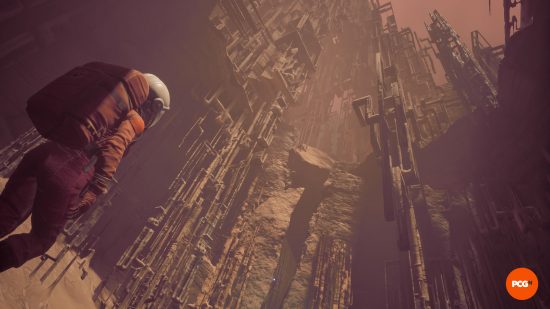
Given my habitual procrastination, it’s hard to truly gauge just how much time a playthrough of The Invincible could take. With so many twists, turns, and revelations, I felt as if I was experiencing a perpetual epilogue: one I could hardly take my eyes off. If I were to put a number to it, I’d say it closely lived up to the eight-hour mark outlined by the developers, with the remaining 19 achievements left to grab suggesting there’s plenty of reason to jump back in if you’re so inclined.
Doing so, however, is a tall task given the lack of manual saves and save slots. Unlike most branching, choice-driven narratives, you can’t come out of one playthrough with a catalog of pivotal moments ready to jump back into. You have to play again from the beginning. Usually, I’d scoff at any attempt to artificially inflate a game’s worth and disrespect a player’s time, but in the case of this, it genuinely feels like the best way to go about it. Choices matter, and I’ll respect the developer’s narrative intent for The Invincible to both read and play like a sort of Groundhog Day or Haruhi’s Endless Eight.
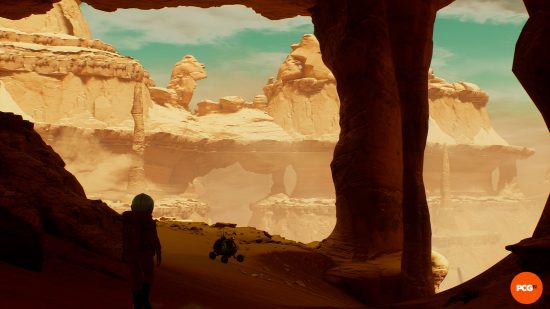
I’m not sure if I’ll personally have the time to see multiple runs through to the end, but if you’re enthralled by the world from the very beginning, there’s no doubt in my mind that you’ll want to see how differently things can play out if you push the right buttons. That is, if the unforgiving save state and checkpoint systems don’t rub you the wrong way the first time around. There was one unfortunate wedging of a vehicle that, had it happened half a second later, could have completely invalidated my save.
Despite a few missteps with its core mechanics, The Invincible is a narrative simulator worth playing. Largely every criticism I can make could very well be patched out before it’s your turn to step into Yasna’s shoes, but that’s not something we can promise will happen. Its secondary mechanics, like the Atompunk-style scanner and radar tools, can be clunky and slightly underutilized, but the core experience is engaging, engrossing, and philosophically sinister all the same. If you’re looking to get lost on another planet, this potentially bite-sized jaunt is an easy recommendation for a lazy weekend. If you can, go in blind. The promotional screenshots spoil a couple of its best moments.
